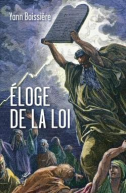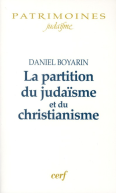
Du prophète au savant
Collection Patrimoines - Judaïsme
368 pages - mars 2010
37,40€
À partir d'une lecture du « Guide des perplexes » de Maïmonide, rabbin, philosophe et médecin (1135-1138-1204), l'auteur analyse la figure du savant et son rôle, dans le temps de l'Exil et de la perte de la prophétie, depuis la chute du Second Temple. La vocation du savant est interrogée à travers la question de la perplexité qui parcourt le traité. Celle-ci n'est pas un égarement mais, en raison des contradictions qu'elle engendre chez le savant, nourrissant sa révolte, elle représente également l'impulsion initiale préparant le savant à restaurer la science profonde de la Loi, c'est-à-dire à refonder la religion grâce à la philosophie pour revivifier cette science ancienne que Maïmonide juge perdue. Par l'étude du mode de restauration de cette science, ce sont les « lumières » proprement maïmonidiennes qu'il s'agit de dessiner. Cette restauration, par le « Guide des perplexes », est-elle réservée à une élite ou sa fonction est-elle également sociale, celle de l'enseignement des masses par cette élite ? De même, est interrogée, en creux, la temporalité de l'accomplissement de la Loi. Cette dernière ne serait pas linéaire mais parcourue de suspens, d'oublis et de pertes, et ce serait à travers ces stations irrégulières que le savant-perplexe aurait à trouver sa voie. Si ce projet de restauration est ouvertement philosophique et intellectuel, cette étude vise à montrer qu'il est également social et politique à travers la vocation du savant à endosser le rôle de guide des communautés, figure charnière entre le prophète absent et le roi-messie dont la venue semble repoussée sur le fond d'un horizon infini.
--
Drawing from a reading of the ‘Guide for the perplexed’ by Maimonides - rabbi, philosopher and physician (1135-1138-1204) - the author analyses the figure of the sage and his role, in the time of Exile and the loss of the prophecy, after the fall of the Second Temple. The sage’s vocation is examined in the light of the theme of perplexity, which runs through the treatise. This perplexity is not a sign of confusion: because of the contradictions it engenders in the wise man’s mind, nourishing his revolt, it is also the initial impetus that prepares him to restore the deep science of the Law; in other words, to reestablish religion thanks to philosophy and so revive ancient knowledge that Maimonides judges to be lost. By studying how that science can be restored, we evoke the specific ‘enlightenment’ of Maimonides. Is that restoration by the ‘Guide for the Perplexed’ reserved for the elite? Or does it also have a social function: that of teaching the masses via the elite? At the same time, a negative image appears; of the temporality of the achievement of the Law. The latter does not appear to be linear but interspersed by loose ends, things forgotten or lost; and the sage, in his perplexity, must make his path through these intermittent points. Although this project of restoration is an openly philosophical and intellectual one, this study aims to show that it is also social and political, because of the wise man’s vocation to take on the role of guide in the community, a key figure between the absent prophet and the messiah-king whose advent seems to be distanced to a point on an infinite horizon.
--
Drawing from a reading of the ‘Guide for the perplexed’ by Maimonides - rabbi, philosopher and physician (1135-1138-1204) - the author analyses the figure of the sage and his role, in the time of Exile and the loss of the prophecy, after the fall of the Second Temple. The sage’s vocation is examined in the light of the theme of perplexity, which runs through the treatise. This perplexity is not a sign of confusion: because of the contradictions it engenders in the wise man’s mind, nourishing his revolt, it is also the initial impetus that prepares him to restore the deep science of the Law; in other words, to reestablish religion thanks to philosophy and so revive ancient knowledge that Maimonides judges to be lost. By studying how that science can be restored, we evoke the specific ‘enlightenment’ of Maimonides. Is that restoration by the ‘Guide for the Perplexed’ reserved for the elite? Or does it also have a social function: that of teaching the masses via the elite? At the same time, a negative image appears; of the temporality of the achievement of the Law. The latter does not appear to be linear but interspersed by loose ends, things forgotten or lost; and the sage, in his perplexity, must make his path through these intermittent points. Although this project of restoration is an openly philosophical and intellectual one, this study aims to show that it is also social and political, because of the wise man’s vocation to take on the role of guide in the community, a key figure between the absent prophet and the messiah-king whose advent seems to be distanced to a point on an infinite horizon.
- Dimensions : 145x235x20
- ISBN : 9782204089036
- Poids : 540 grammes






